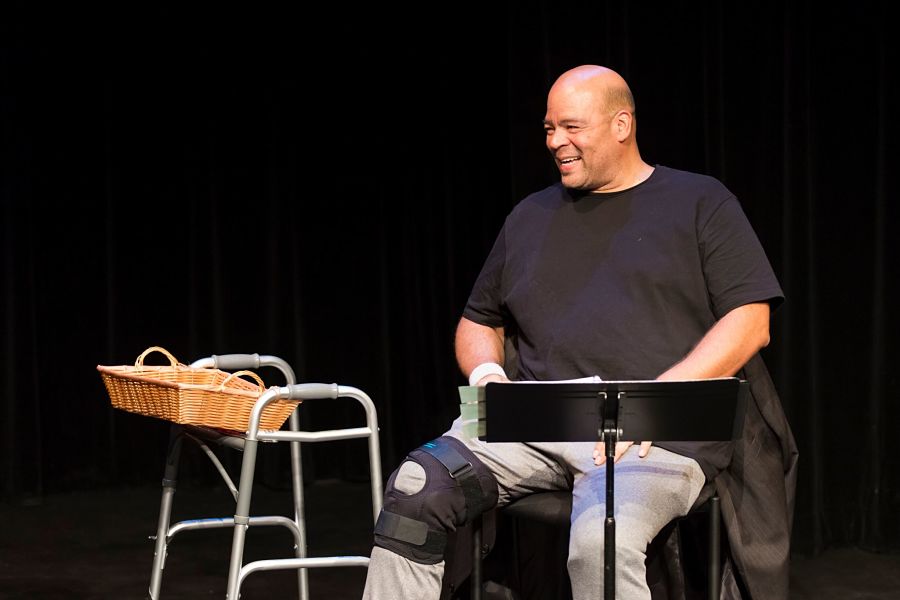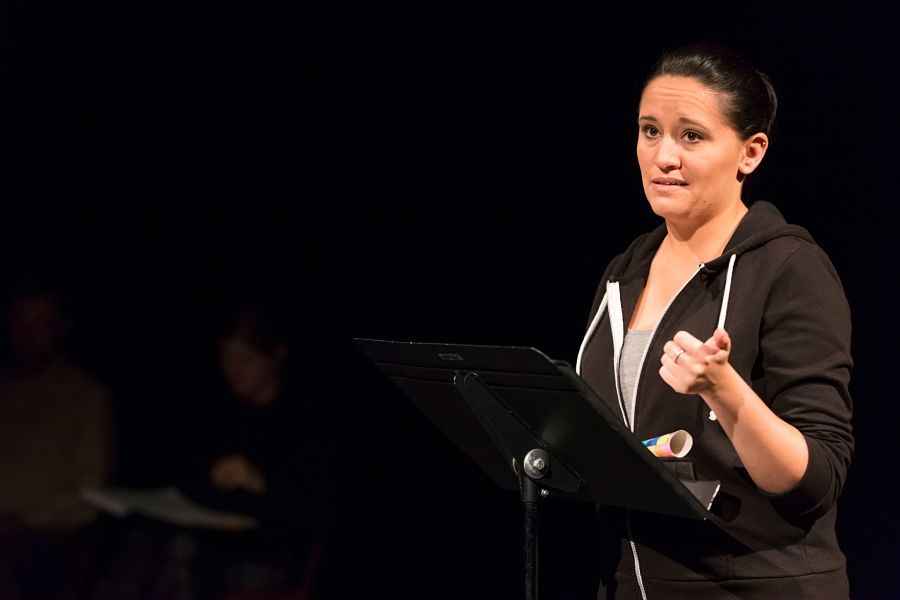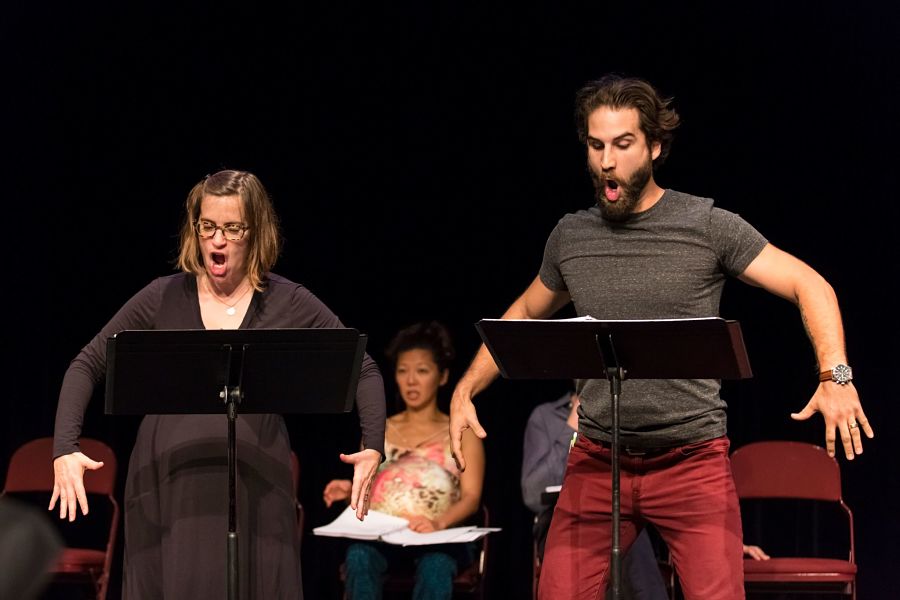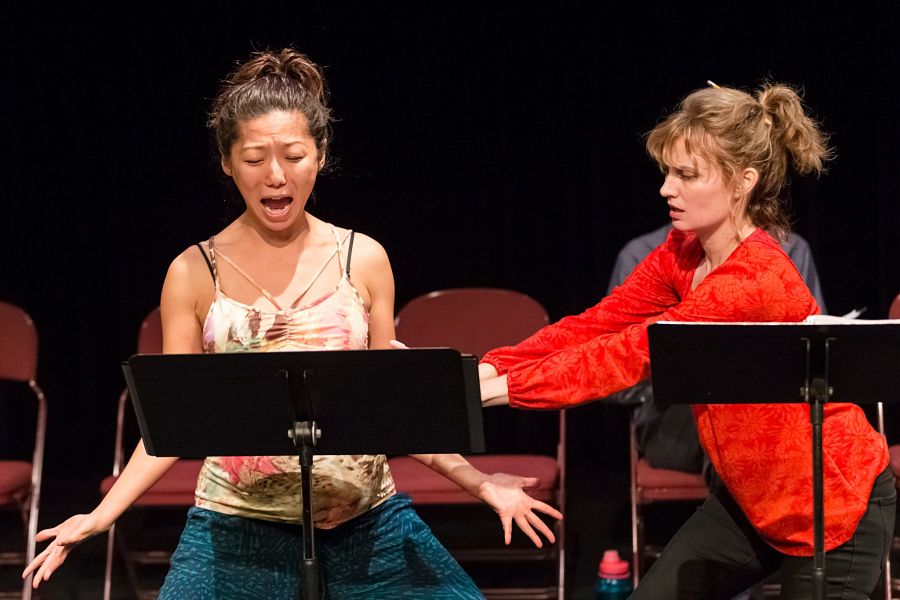MINNEAPOLIS: “We have so many days off!” says Joe Waechter, author of The Hidden People, one of three plays featured in this season’s PlayLabs (Oct. 12–18). Waechter had planned to use some of his free time to walk around a lake in true Minnesota fashion, but “I found myself just sitting in front of my computer for 12 or 14 hours a day rewriting. That time was actually super valuable, because I then got to have these really long writing days and still get to sleep before I went into rehearsal the next day.”
Ask each of the three playwrights involved in PlayLabs, an annual festival of new plays at the Playwrights’ Center, what they find unique and most valuable about the experience, and the answer is invariably this: time. Spread out over 10 days, each writer has two staged readings of their play with days in between dedicated solely to writing, rewriting, rehearsing, and meeting with collaborators. This, too, was another happy sticking point with the playwrights: Each was able to work with a designer on initial ideas for the look and feel of their play.
Oh, and every event—the six readings, the party on Saturday night, the Fellows Showcase, and the panel—is free to the public, including wine and local beers. (Though there was a vase at the bar to collect donations.) This adds to the festive atmosphere and to the notion that the audience is indeed, as artistic director Jeremy Cohen puts it, dropping by an open rehearsal.
Waechter has been involved in with the Playwrights’ Center since 2011, and though he recently moved to L.A., the relationship is bound to continue. This is by design. The Playwrights’ Center makes a concerted effort to maintain meaningful relationships with all of the playwrights who come through its doors. “It’s about creating community around the work and the artists,” says Hayley Finn, associate artistic director of the Playwrights’ Center and producer of PlayLabs. Writers have a variety of ways to get involved with the Playwrights’ Center, she explains. There’s the three-year Core Writer residency, several fellowships, classes, online resources, and more. And once a residency is up, you can apply for another. And if you decide not to, you’re known as an Affiliated Writer. Always connected.
The 32nd Annual PlayLabs featured plays by Kathryn Walat, Ken Weitzman, and the above-mentioned Joe Waechter. Each is a Core Writer, and upon being accepted to PlayLabs, they discussed their goals with Finn. Weitzman, whose play Halftime With Don was part of this year’s festival, determined he’d need a movement coach (Carl Flink) to work with the actor playing Don Devers, an aging football player afflicted with CTE, a brain disease involving dementia and violent mood swings. When coupled with Don’s many injuries and surgeries, these symptoms would lead to atypical physical movements. “What does it mean to the script to see Don try to get all the way across the stage?” wondered Weitzman. “How do you write that?” For Weitzman to understand his play, he needed to see a man who was once full of power morphed into one who needs to sleep in a recliner because getting in and out of bed is too painful.

Consulting designers at this stage of a play’s development may seem premature, but the playwrights, their directors, and the designers themselves find immense value in it, even if the designs are only in concept stage. For Kathryn Walat, bringing in set designer Joel Sass* to provide an initial image board gave her a fuller picture of the world of her play. “The whole experience feels so much about the process,” she says. Walat has been working on Small Town Values for some time. It’s a personal work, as she mentioned in her program note, since, like one of the characters, she grew up in a small New England town and feels divided about the sort of life she was expected to lead versus the one she’s created for herself. With non-textual storytelling and monologues from each character about the small town, her work has whispers of Our Town woven through it. The connection to Thornton Wilder’s play attracted director Adrienne Campbell-Holt to the work, and she was committed to doing it justice. “That feels like the priority,” she says.

Kip Fagan, director of The Hidden People, also finds benefits in bringing in designers early on. “Even if it doesn’t directly affect the shape of the play or the way that the playwright is rewriting the play, it affects the mentality of the playwright when rewriting the play.” The Hidden People is Waechter’s own version of the Biblical tales that Christian missionaries rewrote to incorporate existing Icelandic myth and folklore back in 1000 C.E. With a slew of mythic creatures popping up during an epic journey taken by quarreling but protective twins and their parents in hot pursuit, Waechter realized a puppet designer would best support his irreverent take on this mythic tale. Alison Heimstead, the puppet designer brought on to work with Waechter and Fagan, was both enamored with and sometimes daunted by Waechter’s over-the-top stage directions. But she was comforted by something Fagan told her regarding PlayLabs in general: “This is not about solutions.”

PlayLabs is capped off by a smorgasbord of five-minute scenes from their McKnight, Jerome, and Many Voices Playwriting Fellows, giving the audience a chance to sample a wide variety of styles and aesthetics—from a profanity-laden monologue by a woman who was Joan of Arc in a past life to a couple displaced from New Orleans to Salt Lake City by Hurricane Katrina. Following this performance was a panel on the nature of collaboration and process, which made a perfect conclusion to a week devoted to artists working together, in a compressed amount of time, in service of a new play.
So what happens to a play after PlayLabs? Many playwrights keep working. Some of the plays are picked up to be produced. (In the 2014–2015 season, 29 plays developed by the Playwrights’ Center were presented throughout the U.S.) While the Playwrights’ Center does invite and fly in artistic directors from across the country, the organization brings them in to build long-term relationships—not necessarily expecting A.D.s to shop for plays. “If it doesn’t result in ‘I’m picking this play up,’ it’s not really about that,” says Finn. “It’s ‘I’m having a conversation with this writer. It might be a writer I want to commission, two years from now, three years from now.’”
Finn and the rest of the staff of the Playwrights’ Center have created a space that is all about giving playwrights what they need to uncover their new play, whether it’s seeing it breathe in front of a crowd or working with specific designers or collaborators. “It’s an experiment a playwright can’t do in front of a screen on their own, or with a simple table read,” says Wendy Weckwerth, dramaturg for Small Town Values. “It’s the kind of experiment that requires time and other bodies and space and audiences, plural.”
*The article originally misspelled Joel Sass’s last name. It is Sass, not Sasso.
Theresa J. Beckhusen is an editor and writer based in the Twin Cities.


